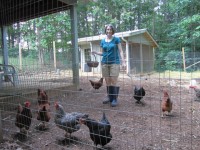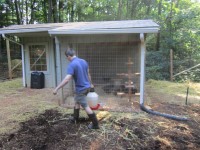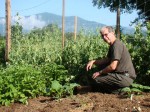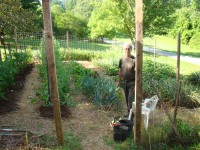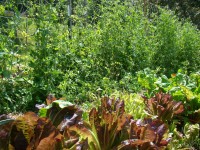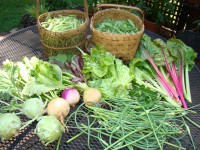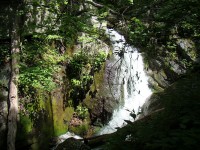
This post will mix reminiscences about three traverse attempts across the Presidential Range of New Hampshire’s White Mountains: a winter traverse with the Harvard Mountaineering Club way back in January 1963; a planned June 2007 traverse with five family members which an ill-timed accident prevented me from participating in; and the backpacking trip last week with my two sons Nic and Tim and their wives Alison and Megan. Each of these trips was interrupted by Mt. Washington’s famously bad weather, but with my climb over Mt. Pierce and up Mt. Madison with Nic (pictured above with Mt. Adams in the background), I finally completed the ascent of all the “president” Presidentials.
Origins
It seems almost insane in retrospect, but as a Harvard freshman with some hiking but no real mountaineering experience, I participated in what was then a Harvard Mountaineering Club (HMC) tradition: a winter traverse of the Presidential range at the end of January, in the break between semesters. My memories are a bit hazy, but I know that we hiked up to a cabin quite high on the side of Mt. Adams on the first day, and then continued, with snowshoes and crampons, the next day over the summits of Adams, Jefferson and Clay to the side of Mt. Washington, where we pitched tents outside the (boarded up) Lake of the Clouds AMC hut. I believe that we hiked up late that afternoon to the weather observatory on the summit of Mt. Washington, where the meteorologists, unused to visitors that time of year, invited us in for a short visit. It was a cold night back in our tents! The next day we continued on over the various summits to what was then called Mt. Pleasant (later renamed Mt. Eisenhower). Here we ran into a ferocious snow storm with very high winds, and we were literally blown off the mountain, making an unplanned descent of its eastern side. My main memory of that descent is crossing a field of young conifers on my snowshoes, and falling through the snow into the air pockets created by branches under the snow, getting the snowshoes tangled up in the branches. But somehow we made it through and out.
The 2007 Expedition
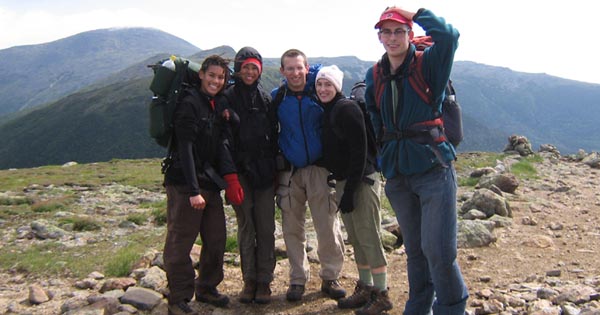
As noted above, I did not get to go on the 2007 hike, but it too was interrupted by bad weather. Having climbed the Mt. Webster-Jackson trail out of Crawford Notch, going over Mts. Webster and Jackson and staying at Mizpah Hut the first night, the group (Cally, Sylvia, Nic, Alison and Justin, along with Lee Spiller who took the picture above) had beautiful weather for the stretch along the AT onward to Lake of the Clouds Hut. But the next day (in June!) brought freezing temperatures, snow and sleet, and a decision was made to come down the trail that ends up at the cog railway station, not risking the very exposed route over the northern Presidentials to the Madison Spring Hut.
click here for a YouTube video of their second day
2012: A Detour and a Completion
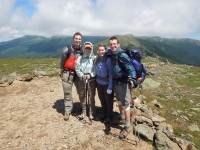

This past week, our party of five followed the Crawford Path from Crawford Notch up to Mizpah Spring Hut and the AT, where we spent our first night. The next day, which started in the fog but cleared up nicely, we continued over Mts. Pierce, Eisenhower and Monroe and then on to Lake of the Clouds Hut, where we spent the night. Since Alison has led tours at President Monroe’s home, Ashlawn, climbing Mt. Monroe (5372′) was a special moment, and she was pleased that Mt. Monroe, with its two peaks, compares very well to the other southern Presidentials.
The next morning we hiked up to the summit of Mt. Washington, the highest mountain (6288′) in the U.S. northeast. The weather worsened at the summit, however, and after waiting two hours to see if it would get better (it didn’t), we reluctantly arranged to take a van down to our car at Pinkham Notch. We then drove around to the Valley Trail up to Madison Spring Hut (seeing a mother moose and her calf along the way). Coming on top of our climb up Mt. Washington in the morning, the hike up the Valley Trail proved to be an exhausting one (with a 3500 feet elevation increase), but we all made it while dinner at the hut was still in progress. In the morning, Nic and I climbed Mt. Madison, which along with Mt. Pierce, belatedly completed for me the Presidentials that the Harvard Mountaineering Club traverse had not covered. The weather partly cleared at the top, giving us beautiful views of the clouds below and the summit of nearby Mt. Adams. We all hiked out later in the afternoon and headed to my sister Eleanor’s place in the Catskills. Overall, a great trip, and my thanks to Nic and Tim for conceiving and organizing it.
click here for more pictures of the 2012 trip
click here to learn more about the AMC huts



 Â
 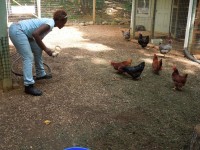









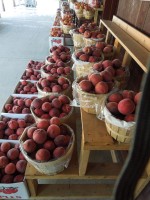





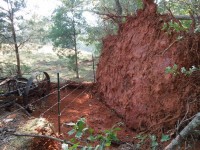 Â
 
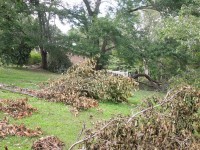
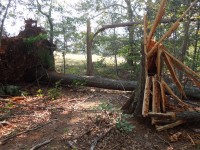
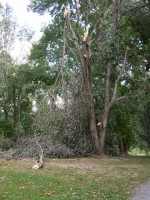
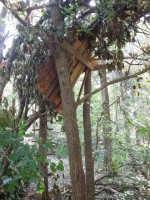

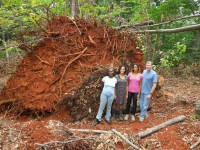
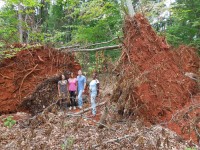


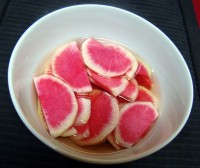
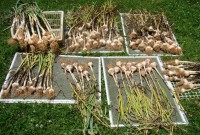
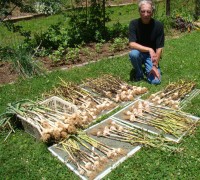
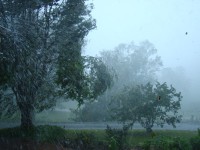
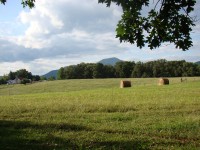

 Â
 


